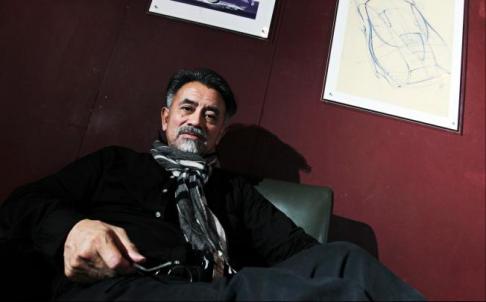
Porsche car designer Pinky Lai geared up for China
South China Morning Post – Pinky Lai Ping is the first Chinese car designer to make a splash internationally.
The 62-year-old Hongkonger has had a highly successful career in Europe, working as a designer for Ford and BMW before joining Porsche in 1989, where he has remained for 24 years.
Pinky Lai says he feels responsible for doing something for the mainland car industry.
It was the first radical restyling of the 911 since it first rolled off the assembly line in 1963. Lai also designed the exteriors for the Boxster and the Cayman.
Lai derived his unusual name, Pinky, from his mother. Although he was given the name “Ping” when he was born, she insisted on calling him Pinky and the name has stuck.
He is the first, by a margin of some 20 years, of three Hong Kong-born designers who have gone on to make an impact with Western carmakers.
Anthony Lo is now vice-president of exterior design with Renault, while Chelsia Lau is chief designer at Ford’s strategic design concepts group in Shanghai.

Lai is now poised to take on a new and quite different challenge. He expects to be joining a large mainland car company as chief designer early next year, when he retires from Porsche. There is already a new design centre, currently empty, waiting for him to move in.
His intention is to stay there for “two life cycles”, which in car industry parlance is about 10 years. During this time, Lai says, he wants to launch a range of cars that will look very different and distinctive. His ultimate goal is to develop a global Chinese car brand.
“I have watched for many years as the Chinese car industry has thrown buckets of money out of the window,” he says. “Although they have hired foreign engineers and designers, they still haven’t been able to develop their own successful brands.”
Lai will be following several designers from Western car companies who have joined the mainland car industry. James Hope was appointed corporate director of design at Chery Automobile in March last year. Previously, he was assistant chief designer at General Motors’ exterior design studio in Germany. He was joined at Chery in December by the Turkish designer Hakan Saracoglu, who spent 14 years with Porsche, during which time he worked on the Boxster, Cayman and 918 Spyder.
Saracoglu was appointed director of Chery’s Shanghai design facility. Chery is hoping he and Hope have the same effect as the German car designer Peter Shreyer had on Kia when he moved from Audi to the South Korean car company in 2006. He radically restyled Kia cars.
Lai says that after years of working in Europe, he is becoming increasingly conscious of his Chinese roots. Given his experience in the car industry, he says he feels “kind of responsible to do something about the mainland auto industry – it’s a way of giving back”.
He is now in the process of taking early retirement from Porsche, which means that alongside working for the German carmaker, he is doing some of his own projects before finally leaving the company early next year.
Lai is Porsche’s general manager of design for global customers and special projects. This means overseeing design projects with external clients in Japan, China, South Korea and Europe, and working with their engineers on transportation projects such as cars, intercontinental trucks, motorcycles, powerboats and cruise liners.
In his private capacity, he even took on a project to design the exterior of a luxury residential property development in Hong Kong. Porsche does not allow its name to be used on these projects, to avoid undermining its brand through overexposure.
Some feel that the Porsche brand has already been weakened by the appearance of the Porsche SUV, a smaller Boxster and so on.
Lai says things have changed since Volkswagen took over the company. “The company appears to be more interested in the volume and diversity of models in an effort to attract a wider customer base,” he says.
So has this undermined the brand? “Obviously yes, because the original value of Porsche was not really about building a lot of cars.” Previously the company would set a volume target. “Then they would focus on the quality of development of a good product and on improving existing models rather than adding new products.”
However, Lai concedes that Porsche had to adjust to changing circumstances in the car industry. Porsche’s growth in sales was flattening out as other competitors started to produce high-performance sports cars. “It was a commercially driven decision to strengthen the company’s chances of long-term survival,” he says.
One of the joys of working at a certain level for Porsche is that you get to drive the company product, which remains his favourite car. For the first 15 years he drove a black 911.
“When you work for Porsche you’re like a volunteer test driver, and as it’s a company car, you know you can really drive it very hard,” Lai says. “You really test it with extreme braking, extreme acceleration and high-speed cornering.”
However, a combination of extreme running and his hard driving has, as he puts it, “ruined” his back, forcing him to move from the 911 to the more forgiving Cayenne.

Pinky should try a small lumbar support cushion. It’s available on line and can work wonders for drivers who suffer from lower back pain, and inflexibility, after driving for awhile.
He should also try to address the design problem that makes the Cayenne seat so much less damaging to the back than the 911 seat.